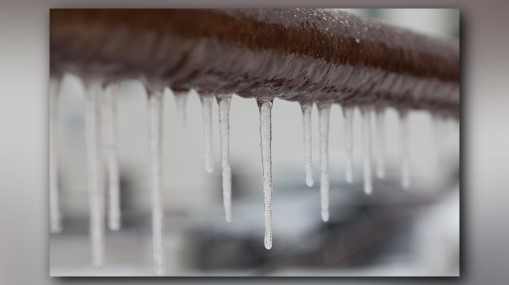Every person has got their unique theory on the subject of Helpful Tips to Prevent Frozen Pipes this Winter.

Winter can wreak havoc on your pipes, particularly by freezing pipelines. Here's exactly how to prevent it from occurring and what to do if it does.
Introduction
As temperatures decline, the risk of frozen pipelines rises, potentially causing pricey repair work and water damages. Recognizing just how to avoid icy pipelines is crucial for homeowners in cool environments.
Prevention Tips
Shielding at risk pipes
Cover pipes in insulation sleeves or make use of warm tape to safeguard them from freezing temperature levels. Concentrate on pipes in unheated or external locations of the home.
Home heating techniques
Keep indoor areas adequately warmed, specifically areas with pipes. Open cabinet doors to enable cozy air to circulate around pipes under sinks.
How to recognize icy pipelines
Try to find decreased water circulation from faucets, unusual smells or noises from pipes, and visible frost on exposed pipes.
Long-Term Solutions
Architectural modifications
Think about rerouting pipes far from outside walls or unheated locations. Add added insulation to attics, basements, and crawl spaces.
Updating insulation
Invest in high-grade insulation for pipes, attics, and wall surfaces. Correct insulation aids maintain regular temperature levels and lowers the threat of frozen pipelines.
Shielding Outside Plumbing
Garden tubes and exterior faucets
Detach and drain pipes garden hoses prior to wintertime. Set up frost-proof spigots or cover exterior faucets with shielded caps.
Comprehending Frozen Pipes
What creates pipelines to ice up?
Pipes ice up when exposed to temperatures listed below 32 ° F (0 ° C) for prolonged durations. As water inside the pipes ices up, it increases, putting pressure on the pipe walls and possibly causing them to burst.
Risks and damages
Icy pipes can cause supply of water interruptions, residential property damage, and costly repair services. Burst pipes can flooding homes and create comprehensive architectural damages.
Signs of Frozen Water Lines
Recognizing icy pipes early can stop them from breaking.
What to Do If Your Pipelines Freeze
Immediate activities to take
If you suspect icy pipes, keep taps open up to relieve stress as the ice melts. Make use of a hairdryer or towels taken in warm water to thaw pipelines slowly.
Final thought
Stopping frozen pipelines calls for proactive measures and quick responses. By understanding the reasons, indicators, and preventive measures, house owners can secure their pipes throughout cold weather.
5 Ways to Prevent Frozen Pipes
Drain Outdoor Faucets and Disconnect Hoses
First, close the shut-off valve that controls the flow of water in the pipe to your outdoor faucet. Then, head outside to disconnect and drain your hose and open the outdoor faucet to allow the water to completely drain out of the line. Turn off the faucet when done. Finally, head back to the shut-off valve and drain the remaining water inside the pipe into a bucket or container. Additionally, if you have a home irrigation system, you should consider hiring an expert to clear the system of water each year.
Insulate Pipes
One of the best and most cost-effective methods for preventing frozen water pipes is to wrap your pipes with insulation. This is especially important for areas in your home that aren’t exposed to heat, such as an attic. We suggest using foam sleeves, which can typically be found at your local hardware store.
Keep Heat Running at 65
Your pipes are located inside your walls, and the temperature there is much colder than the rest of the house. To prevent your pipes from freezing, The Insurance Information Institute suggests that you keep your home heated to at least 65 degrees, even when traveling. You may want to invest in smart devices that can keep an eye on the temperature in your home while you’re away.
Leave Water Dripping
Moving water — even a small trickle — can prevent ice from forming inside your pipes. When freezing temps are imminent, start a drip of water from all faucets that serve exposed pipes. Leaving a few faucets running will also help relieve pressure inside the pipes and help prevent a rupture if the water inside freezes.
Open Cupboard Doors
Warm your kitchen and bathroom pipes by opening cupboards and vanities. You should also leave your interior doors ajar to help warm air circulate evenly throughout your home.

Do you appreciate reading up on How to Prevent Your Pipes From Freezing? Try leaving a short review down the page. We will be pleased to listen to your suggestions about this blog posting. We hope to see you back again in the near future. Those who appreciated our blog post please be sure to pass it around. I praise you for being here. Don't forget to come by our blog back soon.
Visit Url